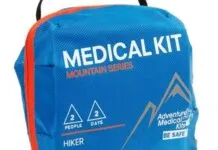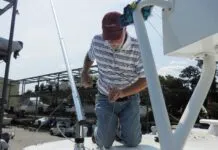Lithium Batteries for Small Boats: Install Guide
This article focuses on sailboat LiFePO4 battery installations and the equipment and wiring changes we need to make to the electrical system in order...
DIY Electrical System Survey and Inspection
So, you’ve finally purchased that new (or new-to-you) boat of your dreams. Now is a great time to familiarize yourself with its systems—a good...
Lithium Batteries for Small Boats
We are now all familiar with the primary advantages (life expectancy, weight, usable capacity etc.) of lithium iron phosphate (LiFePo4) batteries. What is absent,...
Vakaros Atlas 2 Sailing Instrument: Profile
The Vakaros Atlas 2 sailing instrument is making waves in the sailing community. It bridges the gap between high-performance racing technology and practical cruising...
Which Chartplotter is Best for You?
Although there are only a limited number of mainstream chartplotter manufacturers in the North American market, the model lines within each company are dazzling,...
Mobile Hotspot Devices
Today, there are many ways to stay connected from almost anywhere in the world, even in the middle of our vast oceans, thanks to...
A Smart, Easy Way to Rewire
Running the wires for new electronics requires your best cursing vocabulary, lots of sweat, twisting body contortions, luck, and the occasional bandage. For tips on how to make this job easier, we turned to PS contributor Bill Bishop. A professional marine-electronics installer, Bishop has many ingenious ways to thread a wire from point A to point B.
Small Wire Connections: Best Methods
Connecting two standard-size wires is pretty straightforward: Grab a ratchet crimper, adjust it to fit the crimp connector, strip the two wires to fit into the butt connector, slide the wires into the connector, and squeeze the crimper. The required materials are readily available: butt connectors for inline splices, ring connectors for terminal blocks, and a dab of anti-corrosive grease for the bolts and rings. Done right, these connections can survive some extremely tough conditions. In a recent test of anti-corrosion greases and connections, we demonstrated how these connections can last up to five years in the worst bilge conditions.
Electric Outboard Charging Tips
Somewhere around the third carburetor rebuild for our 3.3 hp four stroke dinghy outboard, I decided enough is enough. Four stroke outboards are supposed...
House Battery Bank Replacement: What to Consider
Replacing a battery bank on a cruising sailboat requires a myriad of choices—driven by one overriding goal. What are you hoping to power with...


















































